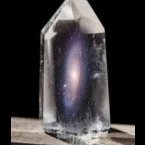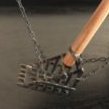-
Posts
13,159 -
Joined
-
Last visited
Reputation Activity
-
 druxey reacted to archjofo in La Créole 1827 by archjofo - Scale 1/48 - French corvette
druxey reacted to archjofo in La Créole 1827 by archjofo - Scale 1/48 - French corvette
@SaltyScot
@ccoyle
@wefalck
Hello,
Since I can't be held responsible for my dear colleagues getting headaches ...😁... , I've tried to translate the terms.
I hope it's more understandable now.👍
-
 druxey reacted to rwiederrich in Staghound 1850 by rwiederrich - 1/96 - Extreme Clipper
druxey reacted to rwiederrich in Staghound 1850 by rwiederrich - 1/96 - Extreme Clipper
Remember when I said translating scale can sometimes be difficult? Welcome to difficult. I remeasured the mast locations and it appears I can fudge. Since Vlad misplaced the main mast slightly forward….. and thus caused the mizzen to also be relocated just enough forward to compensate. I think the offset poop pushed everything forward 2 scale feet. The slightly long poop deck does not reduce the overall appearance, since everything measures correctly forward of it. I’ll just redo the poop furniture. No problem.
Rob
-

-
 druxey reacted to albert in HMS ANSON 1781 by albert - 1/48 - 64 guns
druxey reacted to albert in HMS ANSON 1781 by albert - 1/48 - 64 guns
Thank you very much for yours comments and likes, photo Anson.
-
 druxey got a reaction from J11 in Trireme Olympias by Richard Braithwaite
druxey got a reaction from J11 in Trireme Olympias by Richard Braithwaite
Am I correct in my recollection of reading somewhere that a flute or fife-like instrument was used to keep time, not a drum?
-
 druxey reacted to GGibson in Norwegian Sailing Pram by whitesoup12 - Model Shipways - 1:12
druxey reacted to GGibson in Norwegian Sailing Pram by whitesoup12 - Model Shipways - 1:12
If you fill the gap on the stern side, the seat that is placed there should hide it well. Looking good, sir. 👍
-
 druxey reacted to whitesoup12 in Norwegian Sailing Pram by whitesoup12 - Model Shipways - 1:12
druxey reacted to whitesoup12 in Norwegian Sailing Pram by whitesoup12 - Model Shipways - 1:12
I was going to wait to make a bit more progress before posting another update, but felt this one was worth a recap. In the process of attaching the dagger board case, I noticed the slot in the keel was too long for the case. Had to cut a small piece and glue it in to fill the gap. It worked (and shouldn't be noticeable after painting), but hopefully the bow-to-stern alignment of the case doesn't affect the frames that get attached in the next step. I wasn't sure if I should put it towards the bow or stern.
-
 druxey reacted to ClipperFan in Staghound 1850 by rwiederrich - 1/96 - Extreme Clipper
druxey reacted to ClipperFan in Staghound 1850 by rwiederrich - 1/96 - Extreme Clipper
@rwiederrich Rob and @Luis FelipeLuis after our discussion about relative deck dimension issues, I used a photo app
to realign the few deck sources available. Both the 1881 Hall and 1967 Chappelle copies we have were slightly out of true. I have corrected that as best as possible. The same process was applied to the sole deck image supplied by Luis. Finally, I've included my own beginning deck sketch. By comparing each of these, we can more accurately nail down this portion of Staghound.
-
 druxey reacted to Chuck in Syren Ship Model Company News, Updates and Info.....(part 2)
druxey reacted to Chuck in Syren Ship Model Company News, Updates and Info.....(part 2)
Here is a look at my new 3d printed toggles used on a fighting top to secure the blocks under it. This photo shows I believe 3 sizes of toggles being used and I think they look great.
A big thanks to Greg Herbert who is using them on a commission model and sent me his progress photo.
-

-

-
 druxey reacted to ChrisLBren in La Renommee 1744 by ChrisLBren - 1/48 - 2025
druxey reacted to ChrisLBren in La Renommee 1744 by ChrisLBren - 1/48 - 2025
Thanks guys - I like the Hornbeam a lot so far. It cuts easily and glues well. Also it carves nicely - harder edge to it than Pear or Box. Many of the Eastern European modelers swear by it as a replacement for ebony. As far as bending with heat - I will let you know once I get to the wales. That's probably months away - so far I've broken down and rebuilt more assemblies than I care to admit !
That stem was probably version three. My mill went astray this AM while cutting the rabbet. So I took it apart with my friend Iso Alcohol and will reassemble it tomorrow with a new forefoot. I am very happy the upper part of the stem consisting of black hornbeam was not yet glued to the lower half.
-
 druxey reacted to ChrisLBren in La Renommee 1744 by ChrisLBren - 1/48 - 2025
druxey reacted to ChrisLBren in La Renommee 1744 by ChrisLBren - 1/48 - 2025
Progress on the keel - stem. Pear and Black Hornbeam
-
 druxey reacted to dvm27 in HMS Thorn by Kevin Kenny - 1:48 scale - Swan-class - David Antscherl practium
druxey reacted to dvm27 in HMS Thorn by Kevin Kenny - 1:48 scale - Swan-class - David Antscherl practium
Nice video on blackening Kevin. Some random thoughts - I use either alcohol or acetone as a degreaser. Also, keep in mind that brass is an alloy and, depending on the composition, some brass is much more difficult to blacken. For large groups of pieces I find that pickling first makes a difference in the blackening and uniformity of the finish. For small pieces you can use a paint brush to polish them in a deep tupperware piece so they don't fly away. Polishing prevents the finish from transfering to surrounding pieces and evens out the finish. Finally, while it's easier to blacken the Swan PE sheet whole don't you find that you still have to blacken the cut edges after removal from the sheet?
-
 druxey reacted to Kevin Kenny in HMS Thorn by Kevin Kenny - 1:48 scale - Swan-class - David Antscherl practium
druxey reacted to Kevin Kenny in HMS Thorn by Kevin Kenny - 1:48 scale - Swan-class - David Antscherl practium
What a number of the videos and modelers notes seem to indicate is that no one knows what is on the brass and different solvents will affect different contaminants on the pieces. I have acetone and should have mentioned it. Certainly the best results was pickling the pieces. Based on my soldering experience this has never disappointed me. You are right about blackening the photo etched pieces still connected to the frame. I actually used a stiff paint brush with the solvents and could see something coming off in the solution. My choice would be to prickle the pieces, rinse, then blacken. If they did not take then i would try one of the three solvents i have in the shop until i get success. Thanks for the feedback.
-

-
 druxey reacted to Alvb in Carrack by Alvb - scale 1:250 - CARD - after Pieter Bruegel's "Landscape with the Fall of Icarus"
druxey reacted to Alvb in Carrack by Alvb - scale 1:250 - CARD - after Pieter Bruegel's "Landscape with the Fall of Icarus"
The macro shots are merciless...
...but slowly it is taking shape.
-
 druxey got a reaction from catopower in How were ballast stones held firmly in place to prevent them from shifting?
druxey got a reaction from catopower in How were ballast stones held firmly in place to prevent them from shifting?
I'm sure that you are correct about your statement on the non-naval ships, Bruce. I don't think I suggested otherwise.
-
 druxey got a reaction from chris watton in Yacht Mary by catopower - FINISHED - Mamoli Dusek - 1:54 - An Inherited Model
druxey got a reaction from chris watton in Yacht Mary by catopower - FINISHED - Mamoli Dusek - 1:54 - An Inherited Model
Look at paintings of the day; there are no reef points. Bonnets were used only on larger ships until reef points were introduced.
-
 druxey got a reaction from TOM G in Was ship's painted in the UK back in 1600's ?
druxey got a reaction from TOM G in Was ship's painted in the UK back in 1600's ?
There is no 'correct', Tom; just a best educated guess!
-
 druxey got a reaction from Greg Davis in L'Invention 1799 by Greg Davis - Scale 1:48
druxey got a reaction from Greg Davis in L'Invention 1799 by Greg Davis - Scale 1:48
Just truckin' along there. Quite the assembly line.
-
 druxey got a reaction from Archi in Was ship's painted in the UK back in 1600's ?
druxey got a reaction from Archi in Was ship's painted in the UK back in 1600's ?
A knockabout merchantman would very unlikely have had any painted decoration. I consider the Mayflower II's appearance fanciful. Oiled timbers for preservation would be more probable. She would have perhaps looked like the attached photo on her very best day!
-
 druxey got a reaction from catopower in Rope edging on sails
druxey got a reaction from catopower in Rope edging on sails
For yet another approach, see the topic under 'Reviews': Swan IV, Sailmaking Supplement.
-
 druxey reacted to Greg Davis in L'Invention 1799 by Greg Davis - Scale 1:48
druxey reacted to Greg Davis in L'Invention 1799 by Greg Davis - Scale 1:48
Most of the parts for frames 43- 50 are ready to cut out. Blanks for the two part floors are between glass plates drying flat. Photocopied patterns for all the parts for frames 51 - 57 are in the plastic tray ready to be rubber cemented to wood. I feel I'm getting rather proficient with the frame assembly line!
Looks like I also need to prepare a bit more 4mm thick material for the last 7 full frames - not going to make it with what I've already milled.
-
 druxey reacted to jpalmer1970 in The Hayling Hoy by jpalmer1970 - 1:48 scale - First POF build
druxey reacted to jpalmer1970 in The Hayling Hoy by jpalmer1970 - 1:48 scale - First POF build
Hello,
Only a brief update this time as not much has happened with the build itself of late. I have been considering the best way to shape bevel on the internal curve of the bollard timbers and hawse pieces and decided that a tilting table for my spindle sander/drill press would be a good idea, so I have spent some time making this. It is just a piece of mdf with some screw in insert nuts attached which allows me to move it up and down on a hinge point which is attached to the sanding base. It is pretty cheap and cheerful but seems to get the work done as required, up to about 18 degrees or so. I intend to start work on bevelling the bollard timbers and hawse pieces shortly.
I have also made up the pieces for the first forward cant frame as this needs to be temporarily fixed into place to determine the where the aft ends of the bollard timbers and hawse pieces finish. This has been constructed and the foot bevelled to the correct angle ready to mount to the keel with rubber cement.





